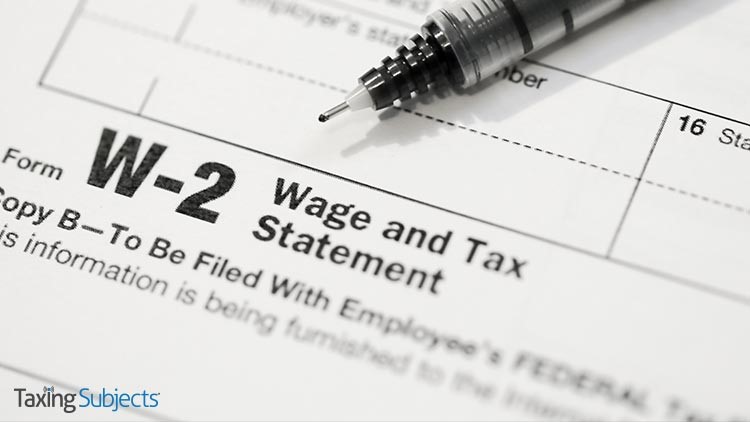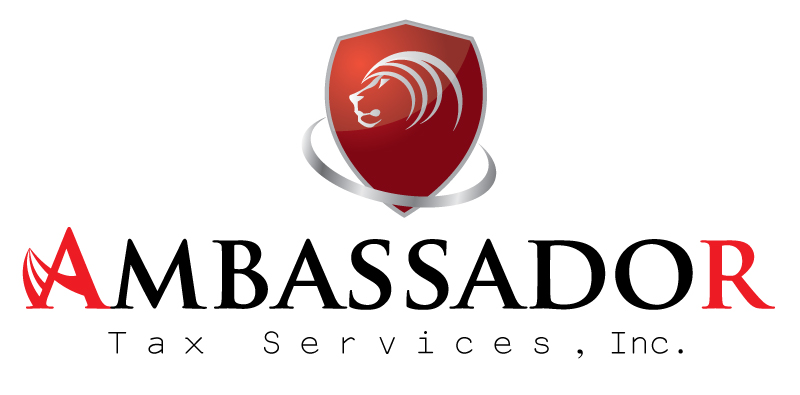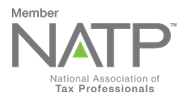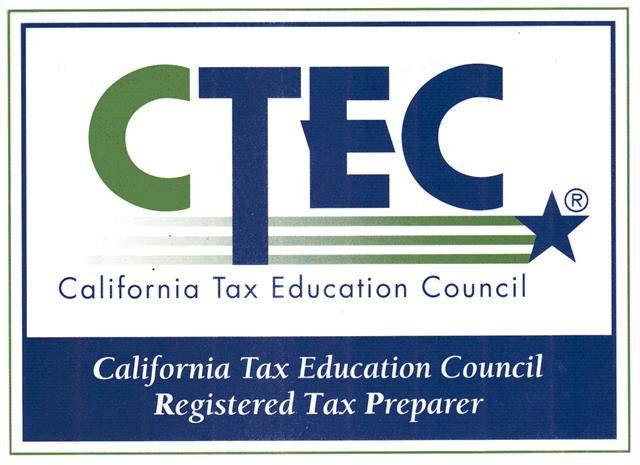
by Ambassador Tax Services, Inc. | Dec 9, 2020 | Tax Tips and News
While it seems our world is on the edge of big changes for the coming year, the IRS is keeping some things status-quo for now. The Internal Revenue Service says interest rates will be the same for the calendar quarter that starts Jan. 1, 2021.
Those rates will be:
- 3% for overpayments (2% in the case of a corporation);
- 5% for the portion of a corporate overpayment exceeding $10,000;
- 3% for underpayments; and
- 5% for large corporate underpayments.
The Internal Revenue Code mandates the rate of interest to be determined on a quarterly basis. For taxpayers other than corporations, the overpayment and underpayment rate is the federal short-term rate plus 3 percentage points.
In most cases, the corporate underpayment rate is the federal short-term rate plus 3 percentage points. The overpayment rate is the federal short-term rate plus 2 percentage points.
The rate for large corporate underpayments is the federal short-term rate plus 5 percentage points.
The rate on the portion of a corporate overpayment of tax that exceeds $10,000 for a taxable period is the federal short-term rate plus one-half (.05) of a percentage point.
These new interest rates are calculated from the federal short-term rate that was determined during October 2020 that took effect Nov. 1, 2020, based on daily compounding.
Revenue Ruling 2020-28, announcing the interest rates, will appear in Internal Revenue Bulletin 2020-52 when it is posted later this month.
Source: IR-2020-270
– Story provided by TaxingSubjects.com

by Ambassador Tax Services, Inc. | Dec 8, 2020 | Tax Tips and News
The Internal Revenue Service is giving employers a friendly nudge to remind them that their Forms W-2 and other wage statements have to be filed by Feb. 1, 2021, to avoid penalties.
Making the deadline will also help the IRS prevent fraud.
A 2015 law made Jan. 31 the permanent deadline to file copies of Form W-2, Wage and Tax Statements, and Form W-3, Transmittal of Wage and Tax Statements, with the Social Security Administration.
The calendar for the upcoming tax season, however, shows Jan. 31 is a Sunday, pushing the due date to the next business day: Monday, Feb. 1.
Certain Forms 1099-MISC, Miscellaneous Income and Forms 1099-NEC, Non-Employee Compensation, are also normally due to taxpayers by Jan. 31. However, this tax season that too has been pushed back to the next business day on Feb. 1.
Various other due dates related to Form 1099-MISC, including due dates to the IRS, can be found in the instructions on IRS.gov.
The normal January filing date for wage statements means the IRS can more easily detect refund fraud, with more time to verify the income that taxpayers report on their tax returns. Employers can help support that process—and avoid penalties—by filing the forms on time and without errors.
Start early for the best results
Good preparation now can help businesses avoid problems later. For example, employers can get an early start verifying or updating employee information such as names, addresses and Social Security numbers or individual Taxpayer Identification Numbers.
In addition, company administrators should ensure their firm’s account information is current and active with the Social Security Administration before January, and should order paper Forms W-2 early if needed.
Automatic extensions of time to file Forms W-2 are not available.
The IRS will only grant extensions for very specific reasons. The instructions for Form 8809, Application for Time to File Information Returns have details.
For more information, read the instructions for Forms W-2 and W-3 and the Information Return Penalties page on IRS.gov.
Source: IR-2020-269
– Story provided by TaxingSubjects.com

by Ambassador Tax Services, Inc. | Dec 5, 2020 | Tax Tips and News
The Internal Revenue Service and its Security Summit partners are warning tax professionals that cybercriminals are targeting them with new ways to get taxpayer information.
The alert says thieves are readying scams that capitalize on tax professionals working from home due to the pandemic.
The Security Summit, comprised of IRS officials, state tax agency representatives and leaders in the national tax industry, closed out its weeklong National Tax Security Awareness Week by issuing this new warning. The annual security event aims to heighten awareness about identity theft and data security measures among taxpayers, businesses and tax practitioners.
“When the Security Summit formed five years ago to fight identity thieves it was clear that the IRS, the state and industry could not be successful without the help of taxpayers and tax professionals. Everyone has a role to play in protecting sensitive financial data,” said IRS Commissioner Chuck Rettig. “We’ve made tremendous progress in the past five years, but we still have work to do. The coronavirus and the increase in teleworking creates new ways for these sophisticated cybercriminals to scam people out of their money or their sensitive tax and financial information.”
As the IRS and Security Summit partners took steps to strengthen defenses against cybercriminals, the identity thieves were turning their focus from individual taxpayers to tax professionals, targeting their offices and data systems.
Data thefts from tax pros can provide a wealth of valuable information to thieves trying to file fraudulent tax returns.
Security Summit partners remind all tax professionals to review their security measures. IRS Publication 4557, Safeguarding Taxpayer Data, provides tax pros with a starting point for basic steps to protect clients.
Also available is the “Taxes – Security – Together” Checklist created by the Security Summit to help tax practitioners identify the basic steps they should take. As more tax pros work from home or from remote locations because of COVID-19, these measures are even more critical for securing tax data.
Don’t forget the “Security Six!”
Easy steps that can make a big difference, both for tax pros and taxpayers:
- Use anti-virus software and set it for automatic updates to keep your systems secure. This includes all digital products, computers and mobile phones.
- Use firewalls. Firewalls help shield computers from outside attacks but cannot protect systems in cases where users accidentally download malware, for example, from phishing email scams.
- Use multi-factor authentication to protect all online accounts, especially tax products, cloud software providers, email providers and social media.
- Back up sensitive files, especially client data, to secure external sources, such as external hard drive or cloud storage.
- Encrypt data. Tax professionals should consider drive encryption products for full-drive encryption. This will encrypt all data.
- Use a Virtual Private Network (VPN) product. As more practitioners work remotely during the pandemic, a VPN is critical for secure connections.
Use multi-factor authentication
In 2021, all online tax preparation products for tax professionals will include an option to use multi-factor authentication. All tax pros are being urged to use this option.
Remember, however, that cheap over-the-counter, hard-disk products may not include an option to use multi-factor authentication.
Of the numerous data thefts reported to the IRS from tax professional offices this year, most could have been avoided had the practitioner used multi-factor authentication to protect tax software accounts.
Using Google Play or the Apple Store, practitioners can download readily available authentication apps to their smartphones. These apps will generate a security code. Codes also can be sent to the practitioner’s email or text but the IRS notes those are not as secure as the authentication apps. Go online and search for “Authentication apps” to learn more.
Use VPNs to protect remote worksites
A virtual private network, or VPN, sets up a secure, encrypted tunnel to transmit data between a remote user and the company network via the internet. As teleworking or working from home continues during the pandemic, VPNs are critical to protecting and securing internet connections.
Offices that fail to use VPNs can open themselves up to risks of remote takeovers by cyber-thieves, giving criminals access to the tax pro’s entire office network simply by accessing an employee’s remote internet connection.
Practitioners shouldn’t be shy about seeking out professional technical help in this area. Seek out cybersecurity experts whenever possible.
Tax pros can also search for “Best VPNs” to find a legitimate vendor, or major technology sites often provide lists of top services. Remember, never click on a “pop-up” ad that’s marketing a security product. Those generally are scams.
Defending against phishing scams
Phishing emails generally have an urgent message, such as “your account password expired.” They direct you to an official-looking link or attachment. But the link could take you to a fake website made to appear like a trusted source, where it requests your username and password. Or, the attachment may contain malware that secretly downloads software tracking keystrokes and allowing thieves to eventually steal all the tax pro’s passwords.
The Department of Homeland Security’s Cybersecurity and Infrastructure Security Agency (CISA) recently issued a warning to all organizations to educate employees, especially those who are teleworking, about increased activity related to phishing scams.
The IRS often sees thieves posing as potential clients, trying to trick tax pros into opening an embedded link or attachment. Scams involving COVID-19 and the Economic Impact Payments also have been common.
It’s the law: Write your security plan!
The IRS and Security Summit strongly remind tax professionals that federal law requires tax practitioners to have a written information security plan. The Federal Trade Commission has enforcement authority—by federal law—over this provision.
Tax pros can learn more about the FTC’s “Safeguards Rule” from IRS Publication 4557.
In addition to the required information security plan, tax professionals should also consider drawing up an emergency response plan should they suffer a breach and data theft. Such a plan can save valuable time, providing contact information for the IRS Stakeholder Liaisons who are the first point of contact for data theft reporting to the IRS and the states.
IRS Publication 5293, Data Security Resource Guide for Tax Professionals, provides a wealth of data theft information available on IRS.gov, including the reporting process.
For more information on the partners of the Security Summit and other steps to secure tax information, check out IRS.gov/securitysummit.
(If you’re looking for a sample written information security plan, download the Drake Software Tax Office Security Plan.)
Source: IR-2020-271
– Story provided by TaxingSubjects.com

by Ambassador Tax Services, Inc. | Dec 4, 2020 | Tax Tips and News
Businesses should be on high alert as thieves try to use their stolen names and data to file fraudulent income tax returns. The warning comes from the Internal Revenue Service, state tax agencies and tax industry partners who make up the Security Summit partnership.
The alert marks the fourth day of National Tax Security Awareness Week, and gives businesses a heads-up to protect both data and systems.
The IRS is also planning additional steps to help businesses fight cybercriminals trying to steal their data.
“As the IRS and our partners have strengthened our security standards, identity thieves have looked for new ways to find sources of information, and businesses need to stay alert,” said IRS Commissioner Charles Rettig. “Businesses, just like individuals, can be victims of identity theft. Thieves may steal enough information to file a business tax return for refund or use other scams using the company’s identity.”
Small Business faces a big threat.
Statistics show more than 70% of all cyberattacks are aimed at businesses with 100 or fewer employees. The thieves may target credit card information, the business’ identity information or employee identity information.
The Federal Trade Commission (FTC) encourages businesses to follow their best practices. These include:
- Set your security software to update automatically
- Back up important files
- Require strong passwords for all devices
- Encrypt devices
- Use multi-factor authentication
More information can be obtained at the FTC’s Cybersecurity for Small Businesses site.
Businesses should be especially alert to any COVID-19 or tax-related phishing email scams that attempt to trick employees into opening embedded links or attachments. IRS-related scams can be sent to [email protected].
The IRS is building defenses.
Starting Dec. 13, 2020, the IRS will begin masking sensitive information from business tax transcripts as well as the summary of corporate tax returns, in an effort to block thieves from stealing identifiable information that would allow them to file fake business tax returns.
Only financial entries, the IRS says, will be fully visible. All other information will have varying masking rules.
For example, only the first four letters of each first and last name—of individuals and businesses alike—will be displayed. Only the last four digits of the Employer Identification Number (EIN) will be visible.
The IRS also has launched the Form 14039-B, Business Identity Theft Affidavit, allowing companies to report possible identity theft to the IRS when, for example, the e-filed tax return is rejected.
Businesses should file Form 14039-B if they receive a:
- Rejection notice for an electronically filed return because a return already is on file for that same period.
- Notice about a tax return that the entity didn’t file.
- Notice about Forms W-2 filed with the Social Security Administration that the entity didn’t file.
- Notice of a balance due that is not owed.
The form enables the IRS to respond to the business much faster than in the past and to work to resolve issues that are created by a fraudulent tax form. However, businesses should not use Form 14039-B if they experience a data breach but don’t find a tax-related impact. Check out Identity Theft Central and its Business section.
The W-2 scam is still alive and well.
Tax scams can come and go, but Form W-2 theft schemes seem to be a constant threat. The most common version has a thief pose as a high-ranking company executive who emails payroll department employees and asks for a list of workers and their W-2s. Many times, businesses don’t even know they’ve been scammed until a fraudulent return shows up in employees’ names.
The IRS has special reporting procedure for employers who are hit by the W-2 scam. It also can be found at Identity Theft Central’s Business Section.
Security Summit partners also urge businesses to keep their EIN application information current. A change of address or responsible party can be reported using Form 8822-B.
Remember that a change in the responsible party has to be reported to the IRS within 60 days.
Current information can help the IRS find a point of contact quickly to resolve identity theft and other issues.
For more information about this week-long series and the effort to raise awareness about identity theft, check out IRS.gov/securitysummit on the IRS website.
Source: IR-2020-268
– Story provided by TaxingSubjects.com

by Ambassador Tax Services, Inc. | Dec 3, 2020 | Tax Tips and News
Taxpayers who want to make it harder for identity thieves to successfully file a fraudulent tax return using their information will soon be able to sign up for an IP PIN. Starting in January 2021, the Internal Revenue Service says it will allow any taxpayer to sign up for the Identity Protection PIN Opt-In Program—provided they can “properly verify their identities.”
This announcement comes on the third day of National Tax Security Awareness Week, an educational outreach event designed to help taxpayers and tax professionals protect their private data from criminals. Previously, the only way to get an IP PIN was to participate in the pilot version of the Identity Protection PIN Opt-In Program or for the IRS to confirm you had been the victim of identity theft.
What is an IP PIN?
According to the IRS, an IP PIN “is a six-digit number assigned to eligible taxpayers to help prevent the misuse of their Social Security number on fraudulent federal income tax returns.” Once you register for an IP PIN, the IRS will only accept your tax return if it lists this new identification number—making it much harder for identity thieves commit identity theft tax refund fraud using your information.
How do I register for the Identity Protection PIN Opt-In Program?
To sign up for an IP PIN, use the Get An IP PIN tool located on IRS.gov. While this separate identification number can help taxpayers protect their identities, the IRS notes that applicants who use the online tool “must pass a rigorous authentication process … that uses Secure Access authentication.” (Learn more about Secure Access at IRS.gov/SecureAccess.)
The IRS says that taxpayers should review the following information before submitting an IP PIN application:
- The Get an IP PIN tool will be available in mid-January. This is the preferred method of obtaining an IP PIN and the only one that immediately reveals the PIN to the taxpayer.
- Taxpayers who want to voluntarily opt into the IP PIN program do not need to file a Form 14039, Identity Theft Affidavit.
- The IP PIN is valid for one year. Each January, the taxpayer must obtain a newly generated IP PIN.
- The IP PIN must be properly entered on electronic and paper tax returns to avoid rejections and delays.
- Taxpayers with either a Social Security number or Individual Tax Identification Number who can verify their identities are eligible for the opt-in program.
- Any primary taxpayer (listed first on the return), secondary taxpayer (listed second on the return) or dependent may obtain an IP PIN if they can pass the identity proofing requirements.
- The IRS plans to offer an opt out feature to the IP PIN program in 2022 if taxpayers find it is not right for them.
Luckily, there are options for IP PIN applicants who can’t complete the online identity verification process.
“Taxpayers with incomes of $72,000 or less and with access to a telephone should complete Form 15227 and mail or fax it to the IRS,” the IRS explains. “An IRS assistor will call the taxpayer to verify their identity with a series of questions. For additional security reasons, taxpayers who pass authentication will receive an IP PIN the following tax year.”
Note: While the program is being expanded to include voluntary IP PIN requests, confirmed victims of identity theft are still eligible to receive an IP PIN at no charge after filing Form 14039.
Source: IR-2020-267
– Story provided by TaxingSubjects.com










